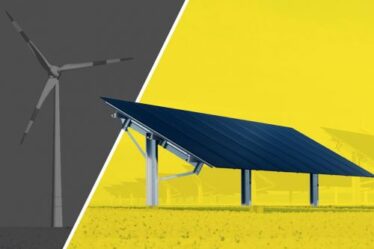
This year, there has been much ado about zero. It’s becoming hard to read the green media, or even the mainstream media, without seeing new net-zero commitments from companies, governments, institutions and others.
Indeed, « net-zero » is the new « zero waste » — remember way back in 2019 when everyone was making that commitment? — which is the new « 100 percent renewable, » which is the new « ISO 14001 certified, » and on and on, all the way back to when announcing a LEED-certified building was widely considered to be media-worthy.
Now, net-zero is the flavor of the month. Global net-zero commitments doubled in less than a year and commitments by companies more than tripled, rising from 500 at the end of 2019 to more than 1,500 by September.
In addition to net-zero companies, there are also net-zero buildings, communities, products, farming, factories, supply-chains, even ships. One large financial institution set forth a commitment to net-zero client emissions.
There’s also net-zero water and waste. There are net-zero-committed oil companies, utilities and airlines. Earlier this year, the United Nations formed a Net-Zero Asset Owner Alliance of institutional investors. The Trump administration even has funded the development of net-zero coal plants. You can’t make this stuff up.
So, you’d think all this talk about « zero » would add up to something, right?
It’s hard to know, according to a new report, « Navigating the nuances of net-zero targets, » by the NewClimate Institute and Data-Driven EnviroLab.
You’d think all this talk about ‘zero’ would add up to something, right? Not neccessarily.
As the report notes, net-zero commitments vary widely in terms of their metrics and transparency, among other things. That is, no single standard governs the way net-zero is defined or measured, or even how it should be communicated. For example, companies may refer to becoming « carbon negative » or « climate positive »; or that they seek to achieve « net-zero » or « net-negative » emissions or « deep decarbonization »; or that they plan to become « emissions-free » or achieve « zero emissions »; or that they are committed to a « 1.5 degrees C pathway. »
It’s not just language. Another issue is the lack of standardization about goals. For example, according to the report, some companies aim to fully decarbonize their own operations along with those of their supply chain, while others have no target for reducing their own emissions. Net-zero goals range from commitments to reduce emissions by a specific percentage by a target year, which are reported through platforms such as CDP, to more general announcements of net-zero ambition.
Target practice
And then there’s the issue of target dates — and, even more so, interim targets. Setting 2050 as the year for achieving net-zero emissions (or some other goal) is one thing — that date aligns with the goals of the Paris Agreement — but that 30-year horizon is a bit far off to enable reasonable accountability, perhaps deliberately so. What progress can we expect to see in, say, 2025 or 2030?
Relatively few companies have committed to such accountability: Only 8 percent of companies’ net-zero targets include interim targets to chart a decarbonization pathway, according to the NewClimate Institute and Data-Driven EnviroLab report, which notes, « Interim targets offer clarity and guidance on how particular targets should be implemented. They provide the transparency necessary to ensure accountability. »
Reliance on offsets is yet another issue. Some experts have deemed it appropriate for companies to invest in emissions offsets once they have made all of the other appropriate emissions reductions — such as through efficiency measures or by buying green energy — but offsetting one’s emissions without really cutting them is another thing altogether. According to the report, only about half of the companies and one-quarter of the subnational governments « are transparent about their intention to use offsets for their net-zero targets. The number of actors that explicitly rule out using offsets is limited. »
Moreover, it added: « Without a radical transformation of the offsetting market and the types of activities it supports, offsetting cannot be considered an equivalent alternative to an actor’s own emission reductions in 2020. »
Even that’s not the end of the issues that companies need to consider. Getting to « zero, » it turns out, is no small thing. And it will loom larger in the coming months, as calls for increased corporate ambition grow, the United States (presumably) rejoins the Paris Agreement, governments edge closer to putting a price on carbon or creating other market mechanisms — and the ravages of a changing climate continue to be felt around the world.
Increasingly, the makers of all those net-zero commitments will need to demonstrate that they truly are making significant progress, and fast.
I invite you to follow me on Twitter, subscribe to my Monday morning newsletter, GreenBuzz, and listen to GreenBiz 350, my weekly podcast, co-hosted with Heather Clancy.


